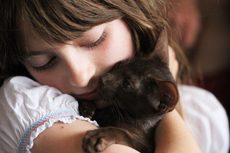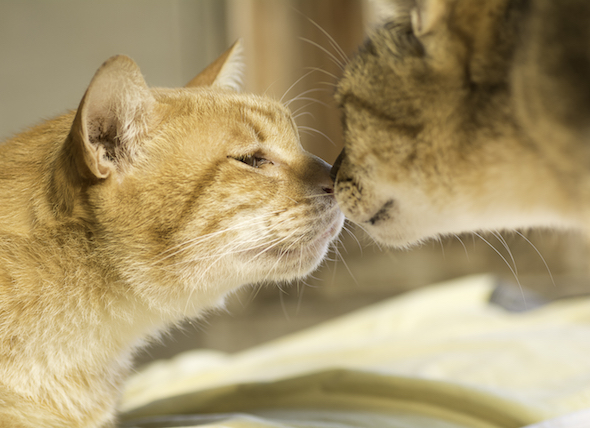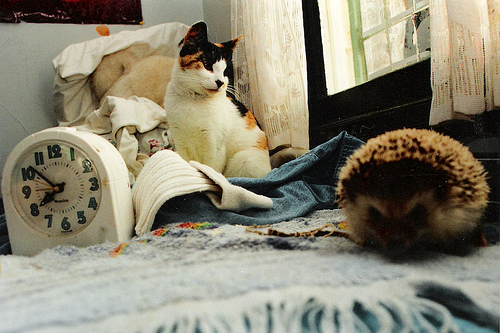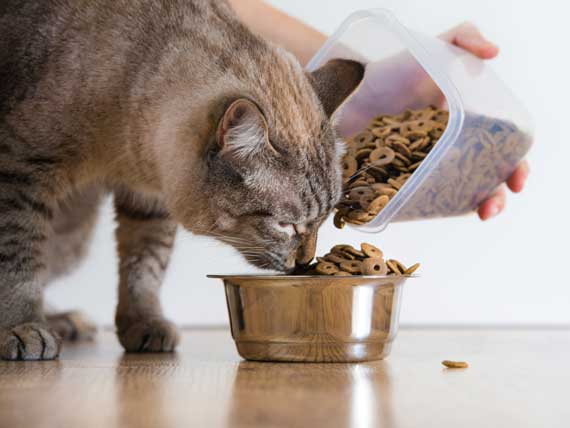
 Cats and children make excellent companions. Both have endless amounts of love for each other, cats teach children patience, the importance of caring for another living being, and both can provide each other with hours of play. There are some guidelines for children and cats to keep both safe.
Cats and children make excellent companions. Both have endless amounts of love for each other, cats teach children patience, the importance of caring for another living being, and both can provide each other with hours of play. There are some guidelines for children and cats to keep both safe.
Picking up cats:
Children under the age of around 6 should not pick up a cat and walk around with him. The average cat weighs 5kg, which is a lot to a child. If they want to hold a cat, they should do so when they are sitting down on the sofa.
Caring for cats:
I think it is important for children to learn about the responsibility of caring for a cat. That includes feeding, making sure they have clean, fresh water and grooming. Older children (over 10) can also clean out litter trays. I do not think that children should be given these chores without parental supervision. Sometimes children forget (well, mine do).
Cat claws:
Keep your cat's claws regularly trimmed so that if he does scratch your child, there is less chance of him hurting them. Claw trimming should begin when your kitten is young, so that he gets used to it.
Your children's friends:
I have managed to teach my children that if they come inside, close the door after them. They've had this drilled into them since they were tiny and it is automatic to them now. However, I have noticed that their friends aren't quite so diligent with closing doors. So, if you have an indoor only cat, make sure you regularly check doors, and drill into your children's friends that they must keep external doors closed to stop the cat getting out. I have repeated this to friends a hundred times, and they still forget. So do keep an eye on doors when your children are having playdates, or lock up the cat in a bedroom until the friends are gone.
Also watch other children and how they handle the cat. My children are now fairly good with our two cats, having grown up around them, however I have noticed their friends can sometimes push the boundaries with my cats. Not picking up on the body language, trying to drag them around like a doll. So when you have young guests over, do watch over them. I know children mean well, but when they haven't grown up around cats they don't always know when the cat has had enough.
Kitten vs adult cat:
Kittens are cute, but they can also be fragile. I do not recommend getting a small kitten if your children are under 4 years of age. If you do want a kitten, see if you can adopt an older one.
No matter how well intentioned a child may be, they often don't realise just how strong they are. A 1kg kitten is no match to a 15-20kg child.
Cat body language:
Your children must be taught to read your cat's body language. They must also be taught when to leave the cat alone. Crossing boundaries will lead to your child being scratched or bitten by a scared, angry or upset cat.
When I was growing up, we had two Siamese cats. Their bed was a cat carrier in the kitchen, next to the radiator. My parents had the rule that if the cats were in their "bed", we were not to disturb them. That was their place, and they knew that they could go in there if they wanted to get away from the humans (especially us children).
Cat basics:
The following are good guidelines to teach your child to keep your cat happy and safe and avoid mishaps.
Zoonotic diseases:
Children (and adults) can catch a number of diseases from cats. While many of these infections are rare, they do occur. These include:
It is extremely important to teach children to wash their hands after handling pets.
Can my child catch worms from the cat?
It is possible for your child to catch worms, but this occurs via soil contaminated with cat (or dog) feces. Worms can not complete their life cycle in a human and most infections are self limiting.
Also see:
Cats and Babies Family friendly cat breeds
 How to Introduce Cats
By Lynne Miller
If your cat used
How to Introduce Cats
By Lynne Miller
If your cat used
 Cat Interfering With Your Sleep?
How to Deal With Your Cat Waking You at Night
Cat Interfering With Your Sleep?
How to Deal With Your Cat Waking You at Night
 Should I Give My Cat Supplements?
By Ashley Gallagher, DVM
Vitamins and supplements
Should I Give My Cat Supplements?
By Ashley Gallagher, DVM
Vitamins and supplements
 5 Things that Could Help Prevent Cat Food Recalls Today
By Lorie Huston, DVM
The l
5 Things that Could Help Prevent Cat Food Recalls Today
By Lorie Huston, DVM
The l
 Why Your Cat's Weight Really Matters
Weight Isn’t Just a Cosmeti
Why Your Cat's Weight Really Matters
Weight Isn’t Just a Cosmeti
Copyright © 2005-2016 Pet Information All Rights Reserved
Contact us: www162date@outlook.com